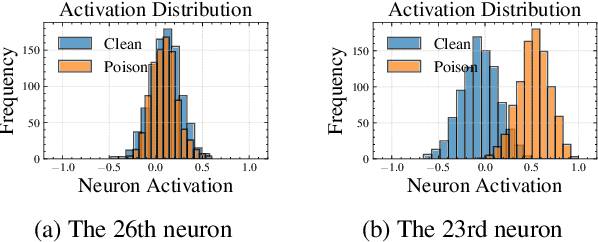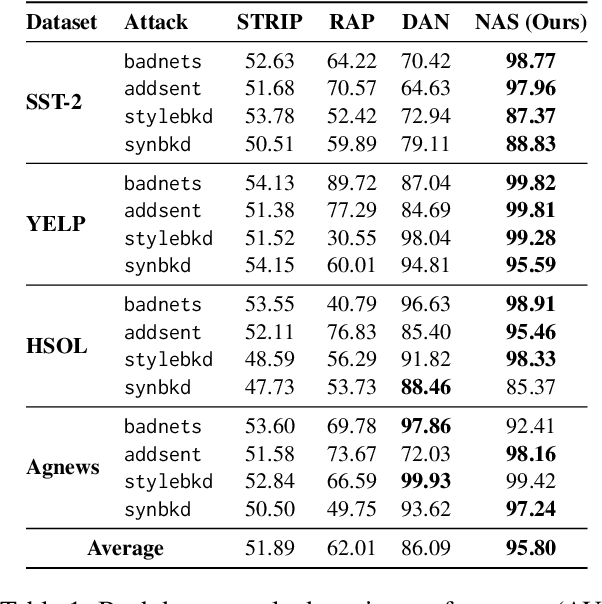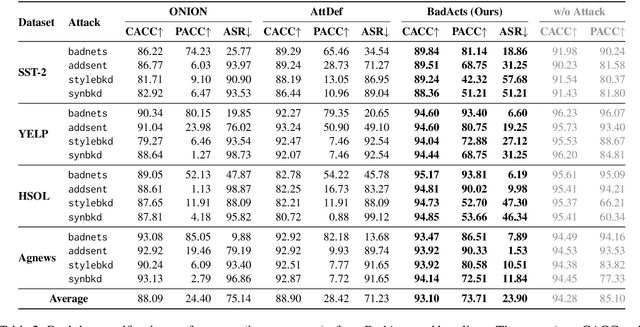Baolei Zhang
Practical Poisoning Attacks against Retrieval-Augmented Generation
Apr 04, 2025Abstract:Large language models (LLMs) have demonstrated impressive natural language processing abilities but face challenges such as hallucination and outdated knowledge. Retrieval-Augmented Generation (RAG) has emerged as a state-of-the-art approach to mitigate these issues. While RAG enhances LLM outputs, it remains vulnerable to poisoning attacks. Recent studies show that injecting poisoned text into the knowledge database can compromise RAG systems, but most existing attacks assume that the attacker can insert a sufficient number of poisoned texts per query to outnumber correct-answer texts in retrieval, an assumption that is often unrealistic. To address this limitation, we propose CorruptRAG, a practical poisoning attack against RAG systems in which the attacker injects only a single poisoned text, enhancing both feasibility and stealth. Extensive experiments across multiple datasets demonstrate that CorruptRAG achieves higher attack success rates compared to existing baselines.
Prompt-Guided Internal States for Hallucination Detection of Large Language Models
Nov 07, 2024Abstract:Large Language Models (LLMs) have demonstrated remarkable capabilities across a variety of tasks in different domains. However, they sometimes generate responses that are logically coherent but factually incorrect or misleading, which is known as LLM hallucinations. Data-driven supervised methods train hallucination detectors by leveraging the internal states of LLMs, but detectors trained on specific domains often struggle to generalize well to other domains. In this paper, we aim to enhance the cross-domain performance of supervised detectors with only in-domain data. We propose a novel framework, prompt-guided internal states for hallucination detection of LLMs, namely PRISM. By utilizing appropriate prompts to guide changes in the structure related to text truthfulness within the LLM's internal states, we make this structure more salient and consistent across texts from different domains. We integrated our framework with existing hallucination detection methods and conducted experiments on datasets from different domains. The experimental results indicate that our framework significantly enhances the cross-domain generalization of existing hallucination detection methods.
BadActs: A Universal Backdoor Defense in the Activation Space
May 18, 2024



Abstract:Backdoor attacks pose an increasingly severe security threat to Deep Neural Networks (DNNs) during their development stage. In response, backdoor sample purification has emerged as a promising defense mechanism, aiming to eliminate backdoor triggers while preserving the integrity of the clean content in the samples. However, existing approaches have been predominantly focused on the word space, which are ineffective against feature-space triggers and significantly impair performance on clean data. To address this, we introduce a universal backdoor defense that purifies backdoor samples in the activation space by drawing abnormal activations towards optimized minimum clean activation distribution intervals. The advantages of our approach are twofold: (1) By operating in the activation space, our method captures from surface-level information like words to higher-level semantic concepts such as syntax, thus counteracting diverse triggers; (2) the fine-grained continuous nature of the activation space allows for more precise preservation of clean content while removing triggers. Furthermore, we propose a detection module based on statistical information of abnormal activations, to achieve a better trade-off between clean accuracy and defending performance.
 Add to Chrome
Add to Chrome Add to Firefox
Add to Firefox Add to Edge
Add to Edge